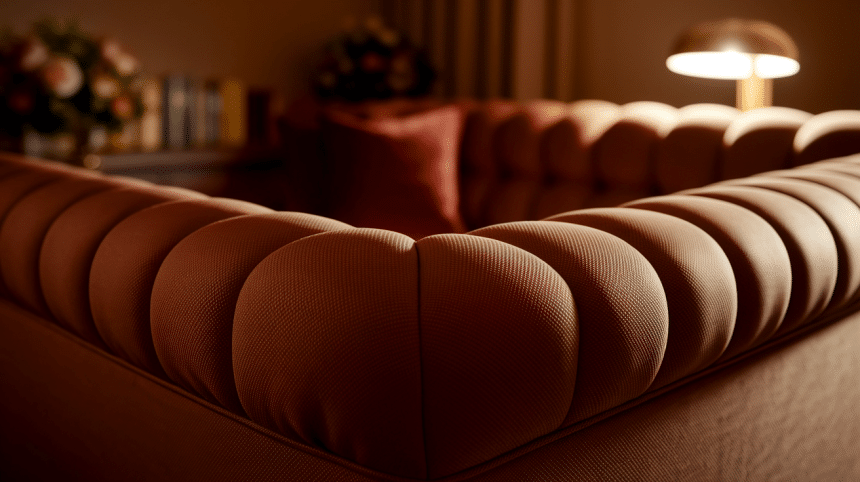Have you ever looked at your sofa corners and wondered why they look worn out faster than other areas? Many furniture owners face this exact issue. Corners are the most challenging parts of upholstery work, requiring specific skills and methods to get right.
What if you could learn how to fix, maintain, and even create clean corners on your furniture? Good corner work can add years to your furniture’s life and boost its look.
This guide will show you the basics of upholstery corners – from picking the right materials to mastering corner-folding methods that professionals use. You’ll learn practical tips to handle corners on various furniture types.
Ready to improve your furniture’s look and durability? Let’s start with the basics.
What Are Upholstery Corners?
Upholstery corners are the meeting points where fabric or covering materials are joined to create neat angles in furniture. These areas need careful handling to create smooth transitions between different surfaces. Corners play a key role in furniture quality, as they often show the skill level of the upholsterer. When made well, corners look sharp and clean, adding to the smooth lines of the furniture piece. When done poorly, they can bunch up, look uneven, or wear out fast.
Corners appear in many places throughout upholstered furniture:
- Seat Cushions – The four corners of cushions where seams meet require proper stuffing and stitching to maintain shape and comfort.
- Backrest Joints – Where the back of furniture meets the sides or arms, creating angles that need smooth fabric transition.
- Arm Connections – The points where armrests join the main body of chairs and sofas, often subject to high stress and wear.
Each corner type needs specific techniques for the best results. The methods used depend on the furniture style, fabric thickness, and the desired look of the final piece. Well-made corners help furniture last longer while keeping its good looks intact.
Common Types of Upholstery Corners
Different corner styles offer varied looks and functions for your furniture. Each type has unique qualities that work better for certain pieces and design goals.
1. Bullnose Corner
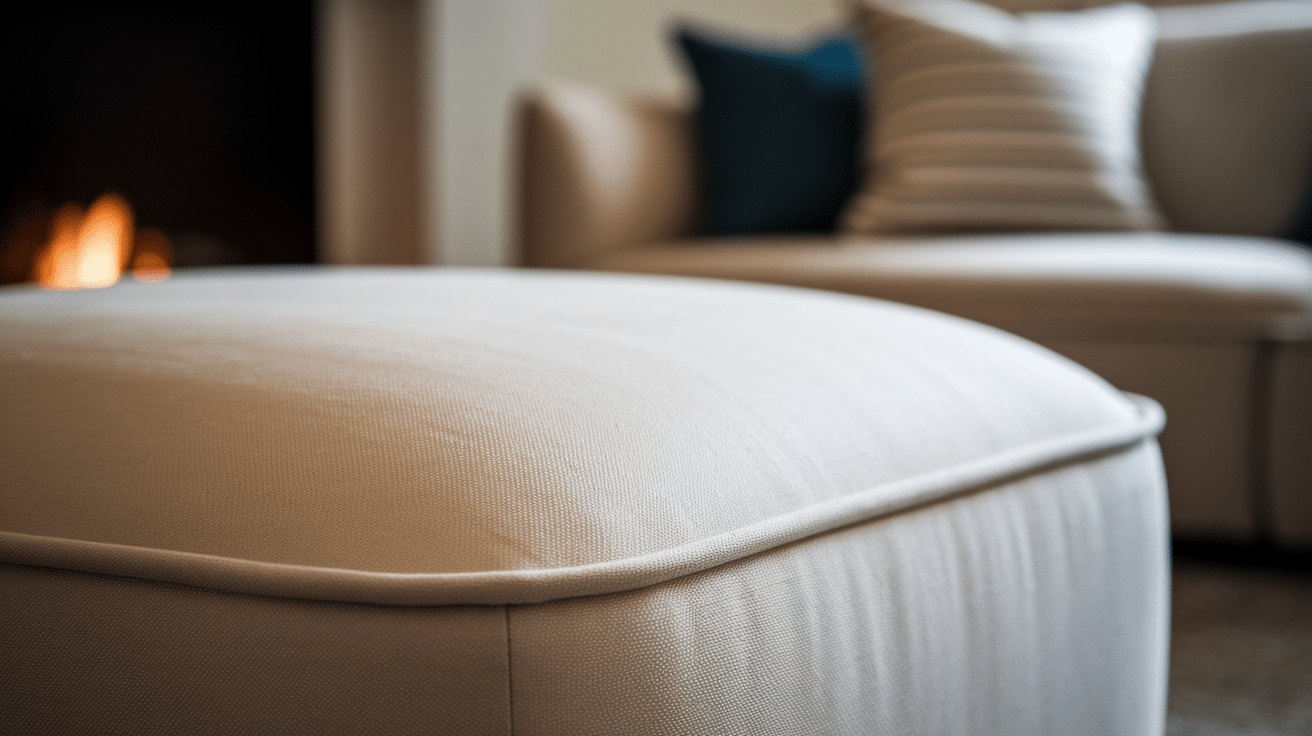
Bullnose corners feature soft, rounded edges that add a gentle flow to furniture lines. The fabric wraps around a rounded form, creating a smooth curve instead of a sharp angle. This style requires careful padding and fabric placement to maintain its shape without wrinkles.
These corners work well in homes with children since they lack sharp edges. The rounded shape also helps fabrics last longer as there’s less friction on a single point. However, they need more fabric and can be harder to keep looking neat over time.
- Fabric requirements: Needs extra material to accommodate the curve without stretching or wrinkling
- Maintenance level: Medium – requires occasional reshaping to maintain the rounded form
- Best furniture types: Ottoman edges, bench seats, and modern sofas
- Skill level to create: Moderate – requires practice to achieve smooth curves
What makes it unique: The smooth, rounded profile creates a welcoming look that stands out from traditional sharp corners.
2. Waterfall Corner
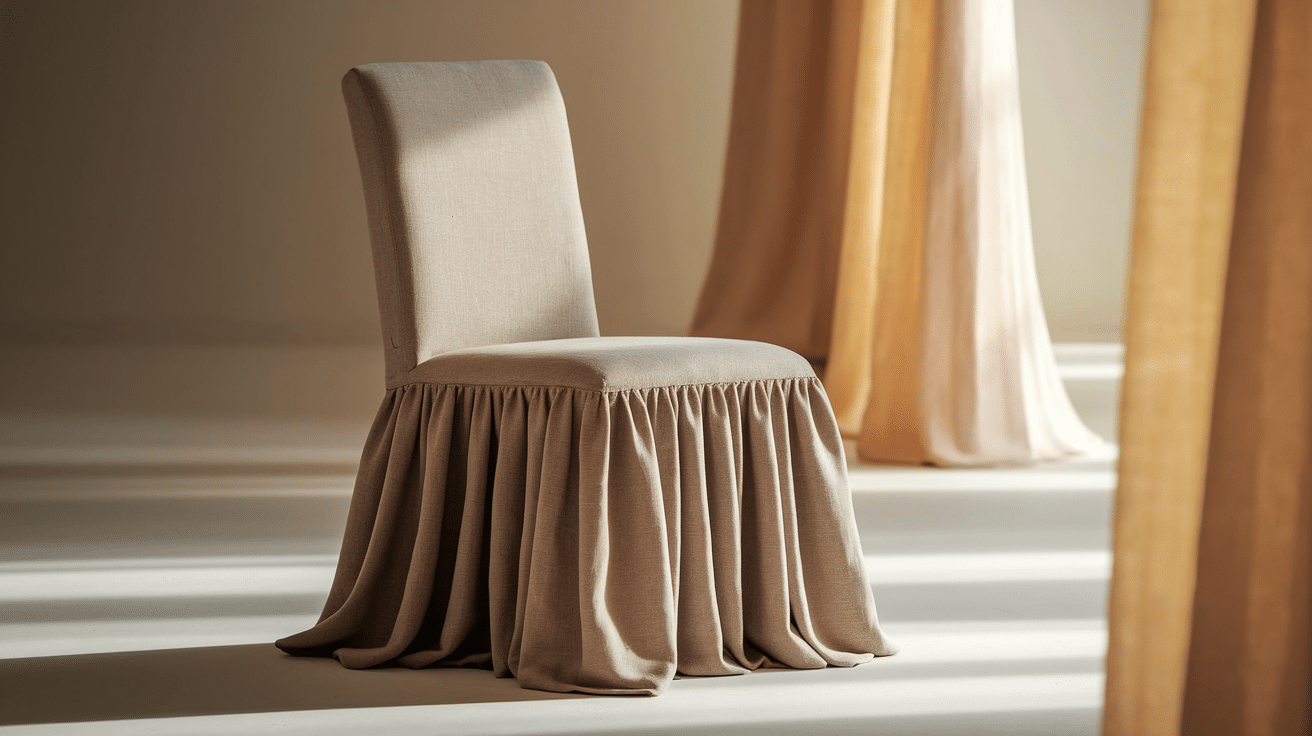
Waterfall corners create a flowing, continuous look where fabric cascades over the edge like water. The fabric drapes naturally from the top surface down the sides with minimal seams. This style creates a soft, casual look that works well in laid-back settings.
Creating this style requires fabric with good drape qualities. The method saves time during construction since it uses fewer seams. However, these corners can lose their shape faster than other types and may not work well with thick or stiff materials.
- Pattern matching: Easier since there are fewer seams to align patterns across
- Fabric types: Works best with medium-weight fabrics that drape well
- Common uses: Casual dining chairs, simple ottomans, and relaxed living room furniture
- Wear factors: Edge can show wear sooner than reinforced corners
What makes it unique: The seamless transition from top to side creates a casual, flowing look that emphasizes fabric texture.
3. Knife Edge Corner
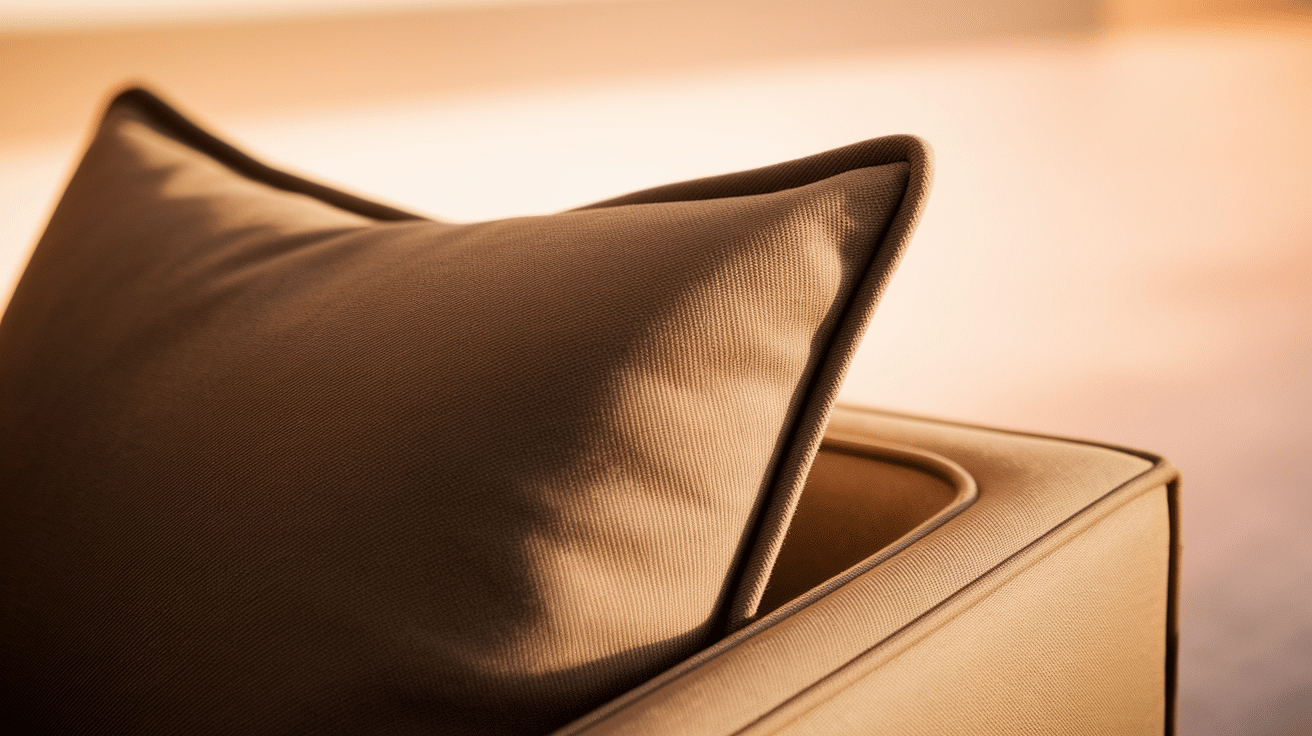
Knife edge corners feature sharp, clean lines that meet at a well-defined point. These corners use precise seams to create a crisp angle. The style adds a formal, structured look to furniture and works well in traditional or modern minimal settings.
This corner type requires exact cutting and sewing for proper execution. When done right, knife edges hold their shape well over time. The style uses less padding than rounded corners, which can make seating feel firmer but more supportive.
- Visual impact: Creates clean lines and geometric shapes in the furniture profile
- Durability: Strong when properly sewn but can wear at the point of the angle
- Fabric considerations: Works with most fabrics but looks best with medium to heavyweight materials
- Style compatibility: Fits formal, traditional, and modern minimalist designs
What makes it unique: The sharp, defined edge creates clear lines that highlight the furniture’s shape and form.
4. Boxed Corner
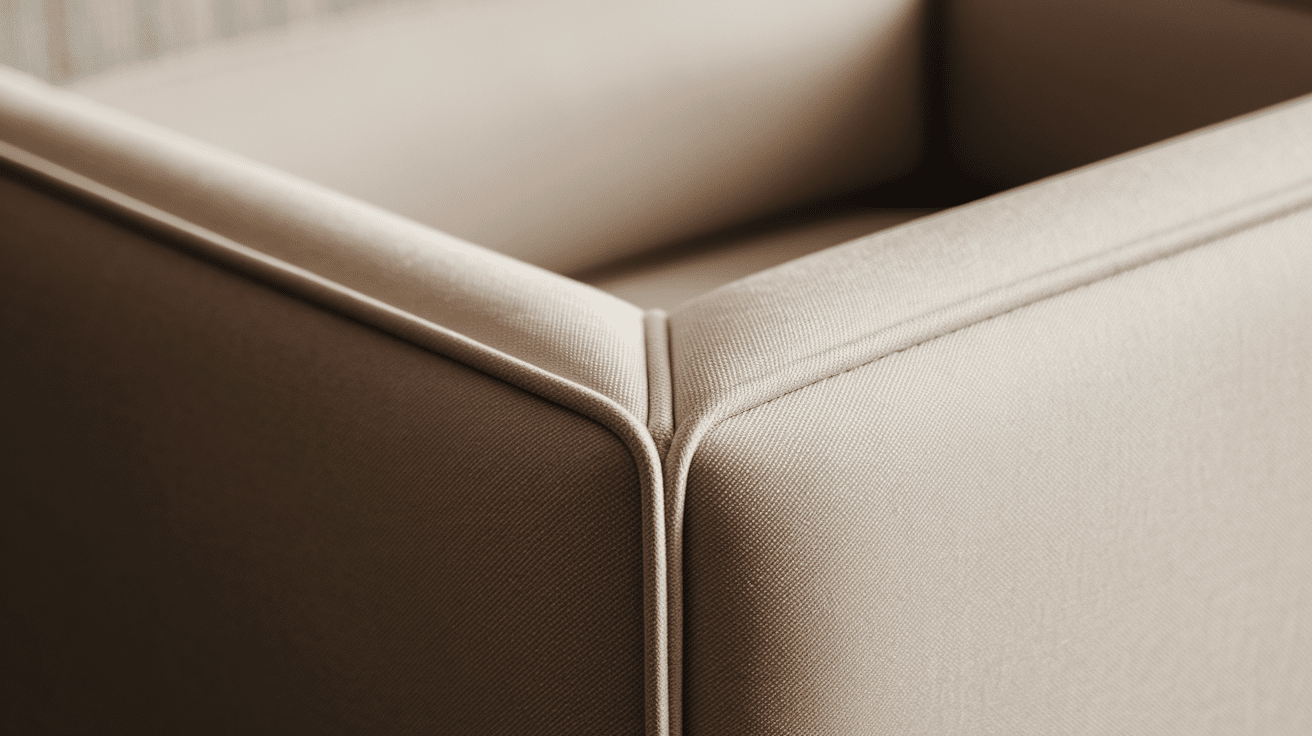
Boxed corners use separate fabric panels for each face, meeting at right angles. This method creates structured, boxy shapes with well-defined edges. The technique is often used in cushions and ottoman tops where a firm, filled look is wanted.
This style adds volume and makes furniture pieces look more substantial. The separate panels allow for different fabrics on each face if desired. However, boxed corners require more precise cutting and sewing, with attention to proper filling to avoid sagging or collapsing.
- Support level: Provides firm seating with good structure retention
- Filling options: Works well with foam, batting, or structured cushion inserts
- Seam placement: Places seams at edges rather than on sitting surfaces
- Visual weight: Makes furniture appear more substantial and grounded
What makes it unique: The multi-panel construction creates clearly defined planes that emphasize structure and solidity.
5. T-Cushion Corner
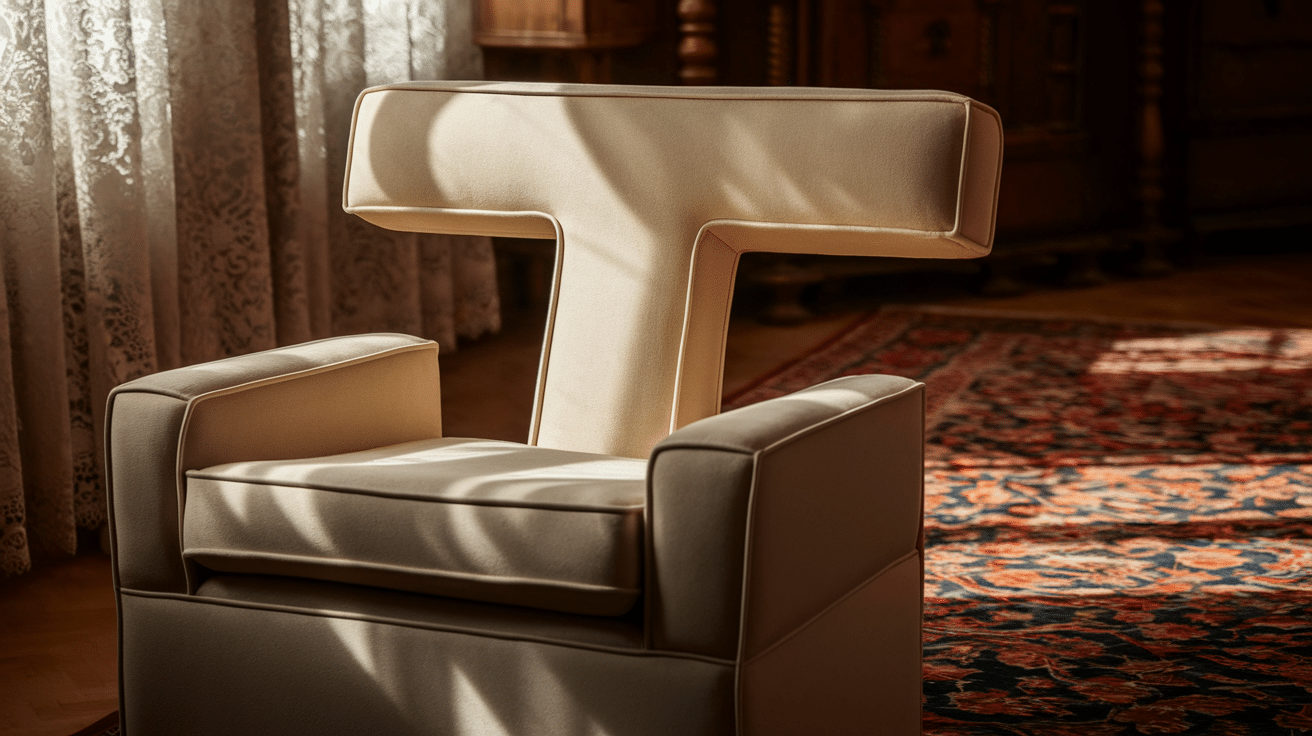
T-cushion corners wrap around furniture arms, creating a T-shape when viewed from above. This style allows cushions to extend forward past the arms, creating a larger seating area. The method is often used in traditional sofas and armchairs for a classic look.
These corners require careful planning and construction to fit properly around arms. When made well, they create a custom, fitted appearance. However, they can be challenging to remove for cleaning and may need more frequent adjustment to maintain their shape.
- Fit challenges: Must be custom-sized to the exact furniture dimensions
- Removal ease: More difficult to remove for cleaning than simple cushions
- Style statement: Creates a traditional, tailored appearance
- Size advantage: Provides more seating surface than standard cushions
What makes it unique: The extended wrap-around design creates more seating space while fitting snugly against furniture arms.
Key Factors Influencing Corner Selection
- Furniture design history – Traditional pieces often look better with knife-edge or T-cushion corners that match their formal style, while modern furniture tends to pair well with bullnose or waterfall corners that create clean lines and smoother profiles.
- Fabric weight and stretch – Heavy fabrics work better with boxed corners that provide structure, while light or stretchy fabrics may suit waterfall corners that take advantage of natural draping qualities.
- Room traffic and household makeup – High-use areas benefit from rounded corners that resist wear better, while homes with children might need bullnose corners to avoid sharp edges and potential injuries.
- Existing furniture match – Consider what corner styles already exist in your room to create visual harmony, as mixing too many different corner types can make a space feel disjointed.
- Tools and techniques available – Boxed corners need more precise cutting and sewing skills, while waterfall edges can be easier for beginners since they require fewer complex seams and less precise pattern matching.
Conclusion
Choosing the right upholstery corners for your furniture makes a real difference in both looks and function. From the smooth curves of bullnose corners to the clean lines of knife edges, each style serves specific needs.
Consider how your furniture will be used, the room style, and your skill level when picking corner types. Remember that good corners last longer and keep your furniture looking its best.
Start with simpler corners like waterfall edges if you’re new to upholstery. As your skills grow, you can try more complex styles like boxed or T-cushion corners.
Whether you’re fixing an old piece or making something new, good corner work is worth the effort. Now you have the basics to make smart choices for your next upholstery project.
Frequently Asked Questions
What Are the Categories of Upholstery?
The main categories of upholstery include residential, commercial, automotive, marine, and outdoor furniture upholstery, each with unique materials and methods.
What Is Edge Roll in Upholstery?
Edge roll is a narrow band of firm padding that creates clean lines along furniture edges, helping maintain shape and providing support where fabric turns.

